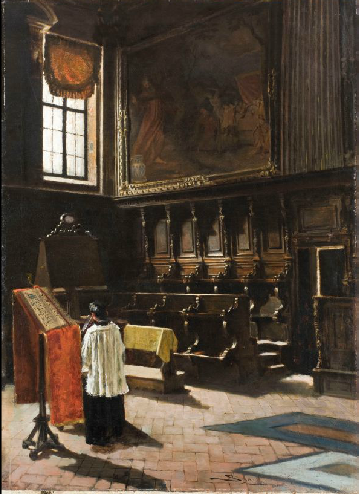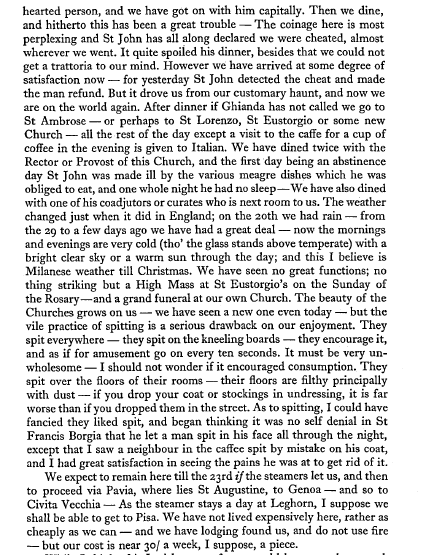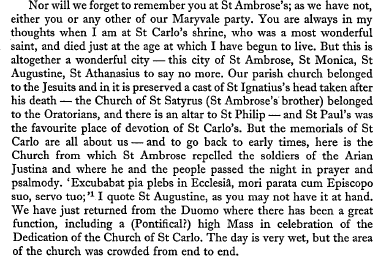Cornelis van Poelenburgh ca.1586-1667
Christ Carrying the Cross
early 1620s
Oil on copper
44.2 x 62.3 cm
The National Gallery of Art, Washington DC
Cornelis van Poelenburgh ca.1586-1667
The Crucifixion, with the Fall of the Rebel Angels
c 1627
Oil on oak panel
57.5 x 50.7 cm
English Heritage, The Wellington Collection, Apsley House, London
Poelenburgh was a Roman Catholic and (like many Italianate painters) a native of Utrecht, the most Catholic of Dutch cities. He was in Rome from 1617 until 1627.
Poelenburgh enjoyed an international reputation during his lifetime: working for Cosimo II de’ Medici in Florence in 1620–21 and for Charles I in London off and on from 1637 to 1641.
The rest of his career was spent in Utrecht, where he received important commissions from local aristocrats and from Prince Fredrick Henry of Orange.
The first work was painted in Rome, and we see an Italianate landscape with soft light
Christ is leaving behind the city of Jerusalem to make his way to Golgotha
He is being pulled forward by a rope, like a beast of burden, like a lamb to the slaughter
We recall Isaiah 53:7:
"He was oppressed and afflicted, yet he did not open his mouth; he was led like a lamb to the slaughter, and as a sheep before its shearers is silent, so he did not open his mouth"
And we also recall Jeremiah 11:19
"I had been like a gentle lamb led to the slaughter..."
In his Gospel, St Luke mentions that the two thieves were also in the group walking out to Golgotha. We see them too but they do not carry their crosses
Jerusalem in this case is represented by the Tomb of Cecilia Metella on the Appian Way built about 50 BC. We see it not as it would have been in Christ`s time but a ruin as in the seventeenth century
There is an irony. The Roman regime at the time of Christ killed and tried to destroy Christ. They were Christ`s accusers. Their works are but ruins
It is an updating of the Procession to Golgotha
Veronica holds a cloth to wipe his face
Besides his persecutors are his relatives and friends: the Virgin Mary, Mary Magdalene, John the Evangelist, Simon of Cyrene, Nicodemus and Joseph of Arimathea
The artist painted the figures first, then the landscape
It is useful to compare this work with two similar works by Poelenburgh`s great hero, Raphael. One is now in the National Gallery in London.
The Procession to Calvary is here (c. 1504)
Also see Raphael`s later work
Caída en el camino del Calvario, or
El Pasmo de Sicilia (c. 1515) in the Prado
for which see here
The second work is an usual depiction of the Crucifixion
We see Jerusalem in outline in the distance
The action takes place well outside the city walls
The scene is dark and sombre, depressingly so. A complete contrast to the scene in the first work
Mary Magdalen embraces the Cross while John and Mary stand together on the right.
The Cross is not face on but on the diagonal, a rare feature but for a while in the seventeenth century it was quite popular
Men are drawing lots for the clothes and possessions of Christ
At the point of death we see on the right the Fall of the Rebel Angels, the Archangel St Michael, flogging a sinner beneath whom is a snake and skull and in pursuit of the fallen
The Archangel Michael and his angels are shown in the act of driving the rebel angels from Heaven.
In Hebrew, the name Michael means “Who can compare with God?”
The two scenes, The Crucifixion and The Fall of the Rebel Angels, are in counterpoint
We see the Fall and Salvation and the Triumph of Good through Christ over Evil
The scene is apocalyptic. There is a sense of the Final Judgment
It is a message in tune with the Baroque Catholic Reform in which Poelenburgh was a participant
The work recalls to mind
Revelation, Chapter 12 which speaks of the conquering of Satan, which means "the accuser":
"7 Then war broke out in heaven; Michael and his angels battled against the dragon. The dragon and its angels fought back,
8 but they did not prevail and there was no longer any place for them in heaven.
9 The huge dragon, the ancient serpent,who is called the Devil and Satan, who deceived the whole world, was thrown down to earth, and its angels were thrown down with it.
10 Then I heard a loud voice in heaven say:
“Now have salvation and power come,
and the kingdom of our God
and the authority of his Anointed.
For the accuser of our brothers is cast out,
who accuses them before our God day and night.
11 They conquered him by the blood of the Lamb
and by the word of their testimony;
love for life did not deter them from death.
12 Therefore, rejoice, you heavens,
and you who dwell in them.
But woe to you, earth and sea,
for the Devil has come down to you in great fury,
for he knows he has but a short time.”





































